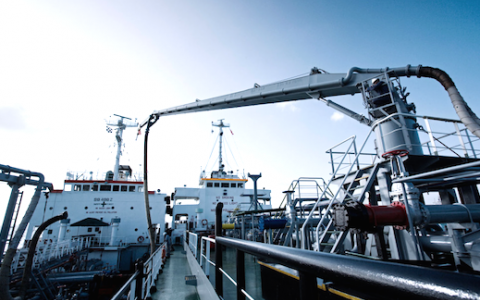Shipping is cleaning up its act

Erik Broekhuizen from Poten & Partners writes exclusively for Splash on bunker decisions for shipowners.
On 27 October 2016, the International Maritime Organization’s (IMO’s) Marine Environment Protection Committee voted on the timing for the new sulphur emissions cap for marine bunker fuel. On January 1, 2020, the global sulphur cap on marine fuels will go down from 3.5% to 0.5%. The organization had previously left the option open that the reduction in global permissible sulphur oxide emissions was going to be postponed until 2025, if a fuel availability study would conclude that not enough distillates could be produced by 2020 to meet the expected increased demand. However, the study, performed by CE Delft, a group of consultants in the Netherlands, concluded that the global refining industry will be able to meet increased demand for middle distillates in the marine sector. With its decision, the IMO has now eliminated the uncertainty with respect to the timing of the implementation of the new sulphur regulations. However, question marks remain on the actual impact on the oil and tanker markets.
Shipowners have two fundamental options on how to deal with the new emissions cap: (1) Burning low sulphur fuel (maximum 0.5% sulphur) or (2) installing Exhaust Gas Cleaning Systems (often called scrubbers), which will allow vessels to continue using high sulphur fuel oil. Existing engines can typically burn low sulphur fuel oil, either lighter gas oil or low sulphur heavy fuel oil, without significant modifications. The use of LNG is also an option but, since using this fuel will require significant modifications to existing vessels, including the installation of separate fuel tanks, LNG is only a viable option for newbuilding tonnage. At the moment, the lack of availability of LNG bunkering facilities worldwide is also a limiting factor, especially for ships involved in tramp shipping such as tankers.
The sulphur cap creates an interesting dilemma for both ship owners and refiners. Shipowners have to decide whether to install scrubbers at an estimated cost of $3m to $6m, depending on the vessel size and design, or to burn higher cost low sulphur fuel. The payback period for a scrubber investment will be relatively short if the price differential between high sulphur and low sulphur fuel remains high or increases. The spread will be high if there is limited demand for heavy fuel oil (HFO), which happens if not many owners install scrubbers and/or refiners do not convert significant volumes of residual fuel oil into lower sulphur products.
For refiners, a similar dynamic applies; they have to decide whether to modify their facilities to reduce residual fuel oil output, as the value of this commodity will drop when demand declines. Less sophisticated refineries could reduce the sulphur content in their output by increasing the use of low sulphur crude grades, but such crudes will likely increase in price.
Currently, global residual fuel demand is about 7.3m barrels per day (Mb/d). The IEA estimated that, in 2014, marine bunker demand accounted for 43% (~3.3 Mb/d) of global residual fuel oil demand. In their market outlook published earlier this year, IEA forecasts that in 2020, about 2 Mb/d of marine HFO demand will convert to MGO.
For owners, the decision is driven by the difference between the cost of installing scrubbers and the expected spread between HFO and the alternative fuel, either Marine Gas Oil (MGO) or Low Sulphur Fuel Oil, which is currently produced in only small quantities. The cost of operating the scrubber system is estimated at about $20-50 per ton of consumption.
Over the last two years, MGO is on average about $200 per ton more expensive than HFO. At this price spread, installing a scrubber on a VLCC burning 70 tons of fuel for 250 days per year would have a payback period of about two years. The price spread may increase further if owners switch from HFO to MGO once the regulations go into effect. On the other hand, it is likely that refiners will develop additional low sulphur fuel oil by blending HFO with low sulphur products to create a fuel that meets the required specs at a lower cost than MGO, limiting the impact.
At this point, most shipowners and refiners appear to be sitting on the fence. Relatively few scrubbers have been installed on tankers so far and most owners are likely waiting to see how prices and differentials develop before they make a decision. The overall state of the freight market will be an important factor for owners as well.
